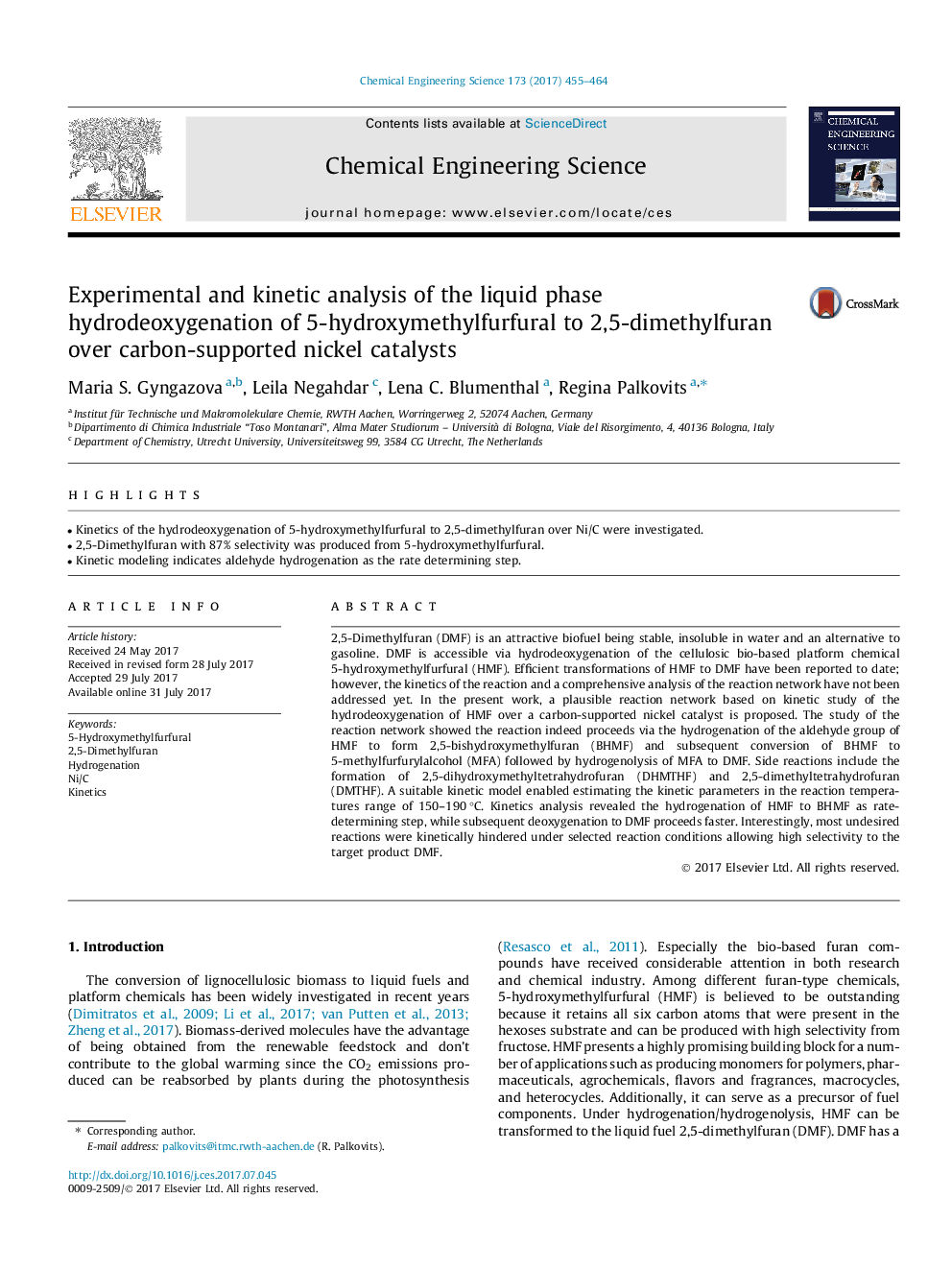| Article ID | Journal | Published Year | Pages | File Type |
|---|---|---|---|---|
| 6466812 | Chemical Engineering Science | 2017 | 10 Pages |
â¢Kinetics of the hydrodeoxygenation of 5-hydroxymethylfurfural to 2,5-dimethylfuran over Ni/C were investigated.â¢2,5-Dimethylfuran with 87% selectivity was produced from 5-hydroxymethylfurfural.â¢Kinetic modeling indicates aldehyde hydrogenation as the rate determining step.
2,5-Dimethylfuran (DMF) is an attractive biofuel being stable, insoluble in water and an alternative to gasoline. DMF is accessible via hydrodeoxygenation of the cellulosic bio-based platform chemical 5-hydroxymethylfurfural (HMF). Efficient transformations of HMF to DMF have been reported to date; however, the kinetics of the reaction and a comprehensive analysis of the reaction network have not been addressed yet. In the present work, a plausible reaction network based on kinetic study of the hydrodeoxygenation of HMF over a carbon-supported nickel catalyst is proposed. The study of the reaction network showed the reaction indeed proceeds via the hydrogenation of the aldehyde group of HMF to form 2,5-bishydroxymethylfuran (BHMF) and subsequent conversion of BHMF to 5-methylfurfurylalcohol (MFA) followed by hydrogenolysis of MFA to DMF. Side reactions include the formation of 2,5-dihydroxymethyltetrahydrofuran (DHMTHF) and 2,5-dimethyltetrahydrofuran (DMTHF). A suitable kinetic model enabled estimating the kinetic parameters in the reaction temperatures range of 150-190 °C. Kinetics analysis revealed the hydrogenation of HMF to BHMF as rate-determining step, while subsequent deoxygenation to DMF proceeds faster. Interestingly, most undesired reactions were kinetically hindered under selected reaction conditions allowing high selectivity to the target product DMF.
